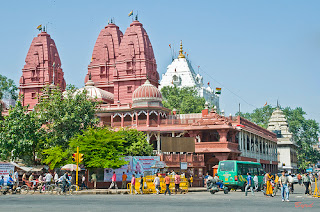Harking back: Is it possible Jain Temple in Lahore might be rebuilt?
The one Lahore landmark that I miss the most is Jain Mandir, which till 1992 stood in all its glory at the crossing south of Old Anarkali opposite the Punjab University grounds. The backlash that followed the terrible knocking down of the Babri Mosque in Ajodhya, India, saw our communal minority reply in kind. Both acts were equally condemnable.
There was much more to this once magnificent ‘mandir’ than the religion it once served. We keep forgetting that Jainism had been the sole religion in the walled city of Lahore for more than 1,000 years, much more than any other religion till date. Before Hinduism and Islam came into being, almost every sub-continental kingdom had Jainism as their official State religion. It is, probably the oldest religion man has known. Ironically, it was the emergence of Buddhism that first violently threatened the Jains, followed by various sects when Hinduism started to emerge aggressively in the second decline of the Indus Valley Civilisation. By that time Lahore was well in place and Jainism was the State religion of the city.
Before we dwell on Jain Mandir, I must share with you that when I last walked through Tehsil Bazaar after having tea with Shahid, son of the late Haji Mubarak Ali, in his small shop beneath the main mosque, I visited the famous Jain Hall in this bazaar. It was before 1947 the main meeting place of Lahore’s Jains. It was left to Haji Sahib to look after, and he did a superb job. Besides these places the walled city has two Jain temples next to each other in nearby Mohallah Bhabrian. One is a Swetambar temple while the other is a Digambar one. Jainism has two sects only, one representing the words of Rishabha, the original exponent of their beliefs, hence ‘swetam’ – the original. The other represented the 24th propagator of their faith, the famous Mahavira, hence the final propagator. The Jain Mandir in Old Anarkali was a Digambar temple.
A bit about Jainism. It is a set of beliefs that propagates that all living forms - human, animal, insects, or any living organism - are equal. No one is superior to the other hence all life forms have to be respected and protected. It also propagates that the only ‘absolute truth’ is the Almighty who can comprehend reality. All others comprehend ‘relative truth’. The story of the blind man and the elephant is an example given in this regard. The sole duty of all living beings is to seek the ‘truth’, hence to seek education. Today 97.2 per cent of all Jains in the world are educated.
The Bhabra merchant community of Punjab are said to be the original Jains. ‘Brahbra Stop’ on Ferozepur Road of Lahore is well known and the area has two temples, representing both the sects. Amazingly Jains worship in any temple, sometimes in both, for enmity is not known in their faith. Hence non-violence and toleration are the two legs on which stands their religion. But enough of these beautiful thoughts and on to the concrete reality of the Jain temples of Lahore.
The most important existing Jain temple in Lahore is the small one at Guru Mangat, where within the temple, at approved times and safe from extremist attacks in communal Lahore, are two footprints in stone. These, so the claim goes, are of Rishabha, one of the founders of Jainism. This, by all accounts, is allegedly the oldest relic of any religion in Punjab. If what they claim is correct, and to be honest I have serious doubts, then if the last propagator Mahavira lived, as the Veds tell is, approximately in 700 BC, then these alleged footprints are at least 4,000 years old. In matters of belief I do not indulge, but if what they claim is correct, then scientifically speaking this is the oldest relic and from the time Harappa was at its peak and Lahore was not a very old dwelling.
When Lahore’s famous Jain Mandir was attacked and demolished, the government promised to one day rebuild it. As it is with government, such promises are not kept, or even meant to be kept. Now finally Lahore’s Bhabra merchant community have come up with the request that they be restored their mandir land, and they will themselves rebuild Jain Mandir.
But there is a problem. Inside the lower room of the mandir, which still is in place, lives a ‘maulvi’ who claims he runs a religious school but sleeps there at night. How does one tackle such a person? Surely with patience, toleration and in a non-violent manner. Lahore has a special temperament that is a mix of all the beliefs that have been here since time began. For this reason it is the world’s largest Sufi city. Even today a special calm lives in its inhabitants, a calm that might one day see Jain Mandir rebuilt. That would show the Babri Masjid communalists how best to live in peace with all religions.






No comments:
Post a Comment